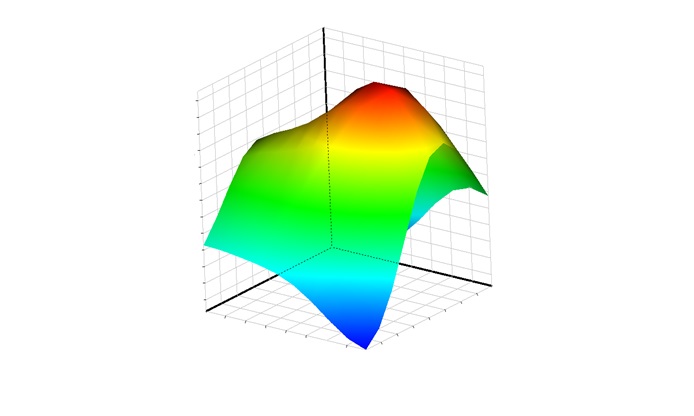A system is an entity that behaves based on the intrinsic characteristics of its components and the external forces that drive these elements to react as a result of their interaction with the environment.
When optimizing a system, three scenarios should be defined. The first is identifying all of its components, boundaries and the conditions acting upon it. The system intrinsically has a homeostatic point where it wants to exist and that may be not optimal for the purpose we want to employ it for. For this reason, we should identify how altering the conditions will drive the system to perform and deliver for us. A DoE looking at interactions between sets of parameters, and the positive or negative effects on the system, provide us a quick reference of some of the boundaries surrounding our system. This must be followed by response surface methods mapping how alterations on the system have an effect, effectively spatially probing the system to identify the conditions that favor the output being searched for. In a way we are “teasing” the system, as a way to obtain information of its response to alterations in its environment.
Deep learning has emerged as a novel tool to quickly predict how a system may behave when disturbed. A set of parameters are used as nodes, and historical data trends can help us define the weight they should have on the system. By clustering large performance data sets, we can quickly get an idea of the system’s behavior.
When deciding on how we want the system to behave, we must consider what we consider to be its optimal performance and its boundaries, how far and how long would it take to get the optimal and how much will it cost to drive it there. To monitor the system’s performance, the implementation of proper controls that inform us on the way the system is behaving is a must. The system should perform in between a time frame that is optimal and reasonable for our purpose. To ameliorate cost, diligent cost modeling should be employed. While engineering a system, the goal should be to combine and maximize the synergy of all components to collectively perform in a way that is useful for us.
Once the conditions that drive the system in a way that performs optimally for our purpose, the system should be “locked” to ensure that it continues to function in the way we need it to. Once a measurement of the propensity of the system to deviate or move away from what we have identified as its optimal, contingency methods should be established to drive the system back to perform in the way we want it to.
The following is a general methodology that can be applied for this purpose.
1. Understand current system:
- Empirically identify critical components and minimum performance requirements
- Identify system’s properties that may help improve universal performance
- Look for opportunities to eliminate redundant or troublesome components and reduce complexity
- Create a simplified model that only contains the critical interacting components
2. Exploring the system in-silico:
- Simulate conditions to identify system’s behavioral trends
- DoE to explore system’s interactions and dependencies, as well as the system’s tolerance and breakage points
- Map system to define operational boundaries to help in trend deconvolution
- Identify system’s maxima and minima performance points
3. Delivering in-situ:
- Functionally test the in-silico model to validate trends and simulated best conditions by validating in-silico conditions on in-situ model
- Compare in-situ against current system to identify value in terms of performance, speed, and cost
- Focus on improving aspects that were not covered during previous iterations
- Run permutations to mitigate suboptimal conditions
- Employ new knowledge to improve applicable systems
Glossary
System: An organized entity made up of interrelated and interdependent parts.
Boundaries: Barriers that define a system and distinguish it from other systems in the environment.
Homeostasis: The tendency of a system to be resilient towards external factors and maintain its key characteristics.
“I think it’s very important to have a feedback loop, where you’re constantly thinking about what you’ve done and how you could be doing it better.” Elon Musk

